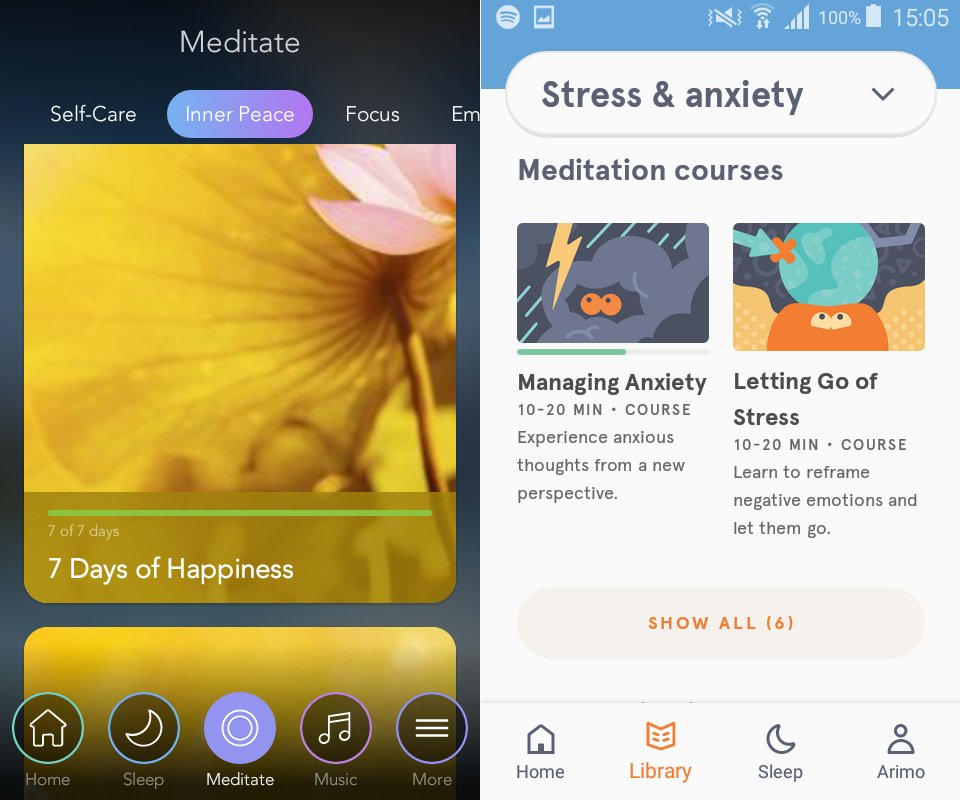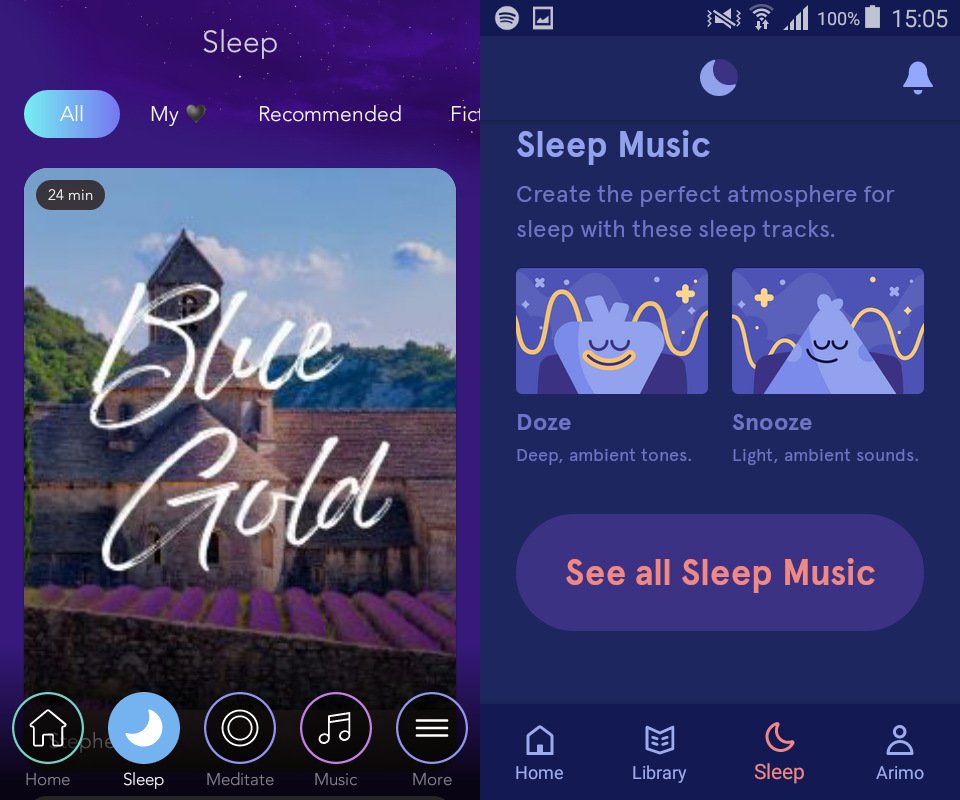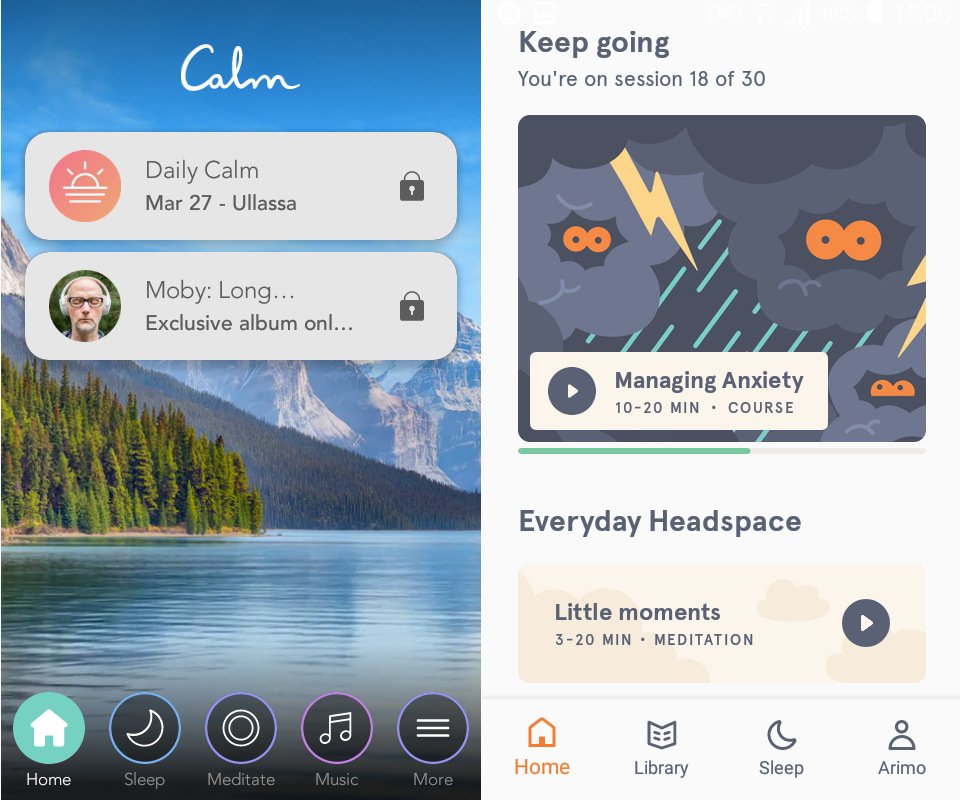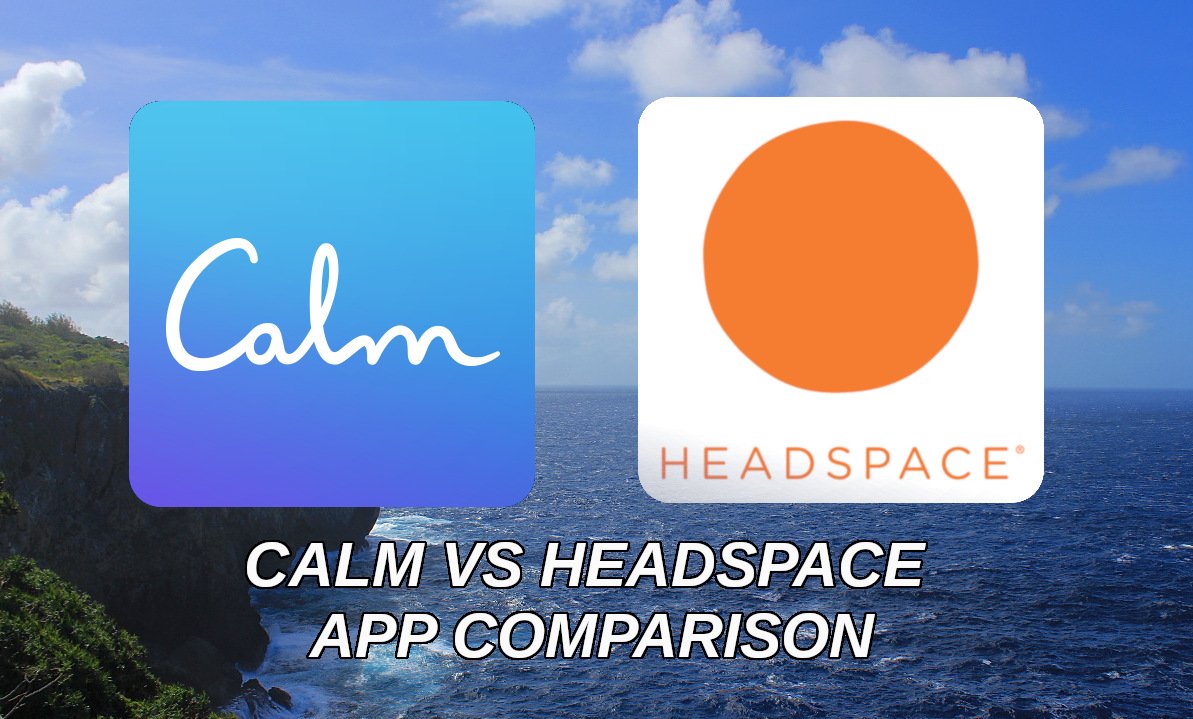Calm vs Headspace, Headspace vs Calm… This article compares the pros and cons of the two popular mindfulness apps.
This article has been over two years in the making.
First, I used Headspace meditation app for one year. Once the year was over, I wrote an app review called “Headspace Meditation App Review (One Year of Daily Use)”. After that I switched to Calm app, finishing my one year subscription with “Calm App Review (One Year of Daily Use)”.
(If you want a deeper look on the features of the two mindfulness apps, I recommend checking out the reviews above.)
Once my Calm subscription finished, I returned back to using Headspace to see how the app has changed while I was gone. This Calm vs Headspace comparison evaluates how the latest versions of Calm and Headspace fare against each other.

The menu icons of Calm are huge and impractical.
Calm vs Headspace Round 1: Presentation
Both Calm and Headspace have put a lot of effort on their presentation. Calm offers a sleek interface that looks stylish and professional. Headspace also looks professional, although it goes with a more playful approach. To add up to the playfulness, Headspace offers great animations that introduce some of the main concepts of mindfulness and meditation.
When it comes to usability and presentation, Headspace beats the first round. Although both apps work well and look great, navigating the menus of Calm can be very cumbersome, no matter how good they look.
Calm vs Headspace – Round 1 Winner: Headspace

Both apps devote a large section on sleep.
Round 2: Features
Instead of a plain meditation app, Calm is more like a hub of mindfulness related content. There’s music, lectures, sleep stories, stretching instructions… Calm has a much wider variety of features than its competitor.
However, it is clear that Headspace has been following what its rival has been doing. Since I first started using Headspace in 2016, the app has added several new features such “Everyday Headspace” meditation sessions and sleep music. Similar features first appeared in Calm, though, and Calm still has the upper hand when it comes to versatility
Calm vs Headspace – Round 2 Winner: Calm

The main menus of Calm and Headspace.
Round 3: Meditation
Calm might have more features than Headspace, but if you want to focus on meditation, I personally prefer Headspace much more. I sometimes feel that Calm is more about inspiration than practical learning. The 10-day and 30-day courses of Headspace teach me more than the courses and single sessions of Calm. Most importantly, Headspace asks the user to do more things outside the meditation session.
Still, this doesn’t make Calm a bad meditation app in any way. For example, some of the single meditation sessions (hidden deep within the clunky menu) are terrific. I especially enjoyed meditation sessions such as a Loving-Kidness technique and a sleep relaxation session where I could set the session duration to 3-30 minutes.
Calm vs Headspace – Round 3 Winner: Headspace
Round 4: Price
As of April 2019, an annual subscription of Calm cost 36 euros (40.5 US$). In comparison, Headspace cost 95.88 US$ (85.2 €), making it much more expensive than its counterpart. However, both apps offer frequent campaigns and discounts. For example, earlier this year Headspace offered 6 months for 20 euros.
Calm vs Headspace – Round 4 Winner: Calm

Calm is cheaper than Headspace, but Headspace can feel more practical at times.
Calm vs Headspace – The Verdict
So, all things considered, which mindfulness app is better – Calm or Headspace? As both apps have their pros and cons, the question might be a matter of preference.
Calm offers a wider variety of content and a cheaper price. It has a sleek presentation and it knows how to reach its target audience. On the other hand, Headspace feels less commercial. I personally think that the meditation itself works better in Headspace, and that is the main selling point for me.
Once my one year subscription of Calm finished, I switched back to Headspace. While I prefer the style and content of Headspace, both apps have their clear merits. The Calm vs Headspace battle might be fierce, but it benefits the users as the two companies try to outperform each other.
Calm vs Headspace Winner: Headspace




